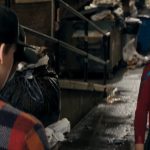Tom Jennings Puts the Space Race Back on Your TV with National Geographic’s “The Real Right Stuff”
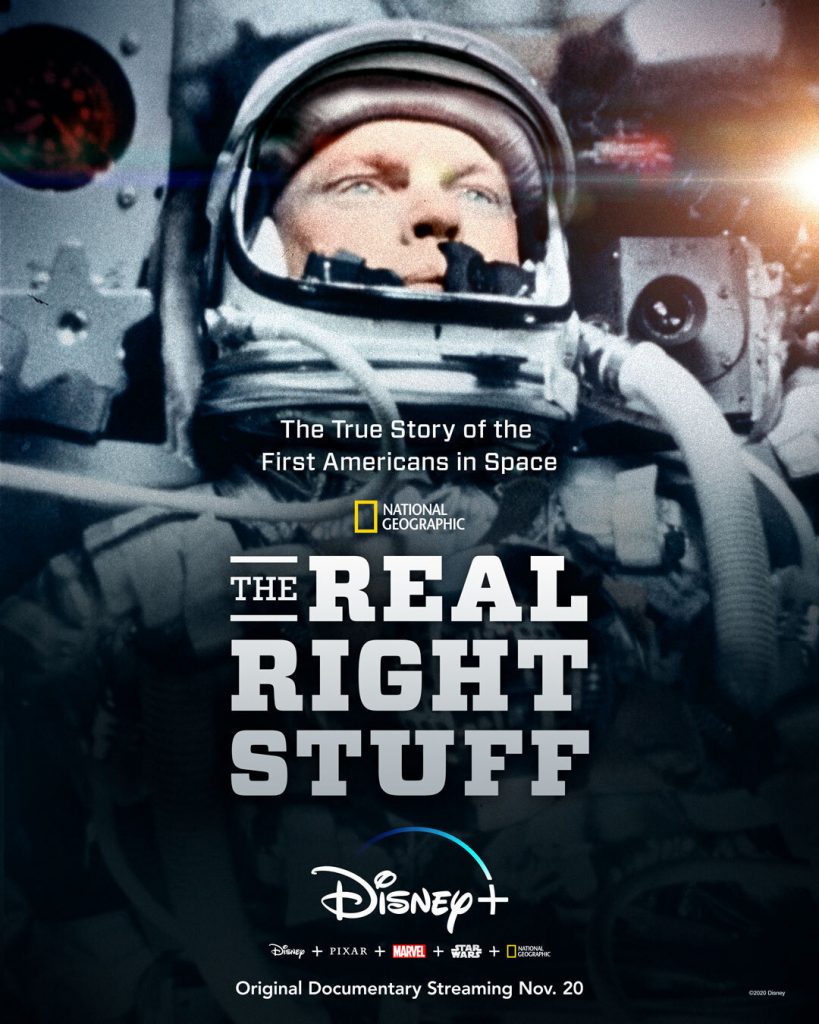
From Emmy and Peabody Award-winning filmmaker Tom Jennings, National Geographic’s The Real Right Stuff premieres tomorrow (November 20) on Disney+ and coincides with the season finale of The Right Stuff series. This documentary on the original Mercury 7 astronauts has no narration and no modern-day interviews and is comprised solely of archival footage. So what, exactly, goes into making a documentary like this?
As a fan of the space program, I am always excited about new material. As an archivist, a documentary made up entirely of archival footage is like a dream come true. So I was incredibly happy to sit down and talk to director and producer Tom Jennings about his new documentary, The Real Right Stuff.
Considering that Tom Jennings is no stranger to documentaries on the space program – his lengthy filmography includes Apollo: Missions to the Moon and Challenger Disaster: Lost Tapes – I found it interesting that there would be a documentary about America’s first seven astronauts at the same time there was a series based on them. What a coincidence!
Actually, it was! During the course of production for Apollo: Missions to the Moon – which came out in 2019 for the 50th anniversary of the Apollo 11 moon landing – Tom Jennings and his production company, 1895 Films, found themselves with a mountain of material not just from the Apollo program, but from the Mercury and Gemini programs as well.
“Our first stop is always NASA, because they have tremendous resources,” Jennings explained. “[…] And they said, ‘Well, if you’re doing all the Apollo missions, you should probably also look at Mercury and Gemini, you know, since they were the predecessors.’ And we said, ‘Oh, sure, send it over.’ And NASA is wonderful. They sent us voluminous amounts of material. And my editor, David Tillman […], said, ‘You should look at some of this Mercury material. This is gorgeous.'”
So the two of them sat in an editing room going through hours and hours of archival film footage of the Mercury program from NASA. Let me tell you, as an archivist, film footage is incredible. It’s of better quality than almost anything on videotape until high definition became prominent. So I can just imagine how they felt watching this material from the 1950s and ’60s.
But it wasn’t just the quality of the footage that gave Tom Jennings pause; it was the fact that he didn’t recognize a lot of what he was seeing.
“Even though I consider myself a student of history, or at least modern history and the recorded age, I recall, as we were scanning all these hours of Mercury footage, that, oh, I’ve never seen that, never saw that, didn’t know that. You know, it was just one after another after another.”
“I think,” Jennings said, “of all the no-narration, no-interview films, these all-archive films that I’ve done in the past – and we’ve done many of them now – I think this one has the most new material that was a surprise to me.”
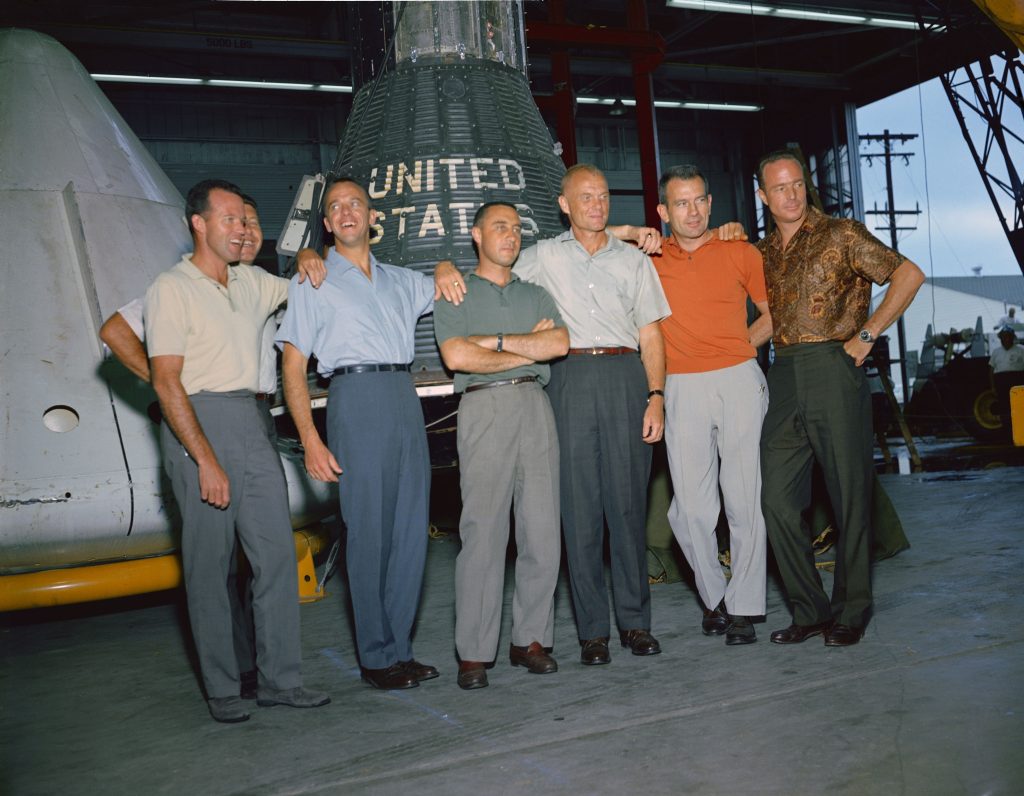
Armed with countless hours of never-before-seen (or not-seen-in-decades) material, Jennings went to the National Geographic executives to pitch the idea of doing a documentary about the Mercury program. “How often do we get to say, in the non-fiction world, ‘it might be a good prequel to the Apollo film’? I’ve never done a prequel before.”
It was then that he learned that another division of National Geographic was in production on an episodic series of Tom Wolfe’s book, The Right Stuff, which is also about the Mercury program.
“And I said, ‘Well, you know, wouldn’t you like to have a non-fiction version to go with it?’ And they said, ‘As a matter of fact, we would.'”
So, amazingly, the streaming series and the documentary were developed completely independently of each other. And I’m so very glad that both NASA was so generous with the material they provided and that David Tillman recognized how amazing it was, because watching The Real Right Stuff was almost like living through the space race.
Then, of course, comes the concept of framing the documentary. Jennings hadn’t seen a lot of the material before, but America’s space program has inspired countless books, films, and documentaries – although most tend to focus on Apollo, because of the whole, you know, moon landing thing. Even HBO’s 12-part 1998 series From the Earth to the Moon only spent one episode covering the entirety of Mercury and Gemini. So, then, how does one approach a topic like this and make it new and interesting?
“We always try and get away from the familiar images and sounds,” said Jennings. “[…] It’s like, you know, [Walter] Cronkite is the narrative voice of the ’60s for documentary filmmakers.”
Walter Cronkite was the anchor for the CBS Evening News for 19 years and was considered, at the time, the most trusted man in America. And you do often see him not only in documentaries about that time period, but also in movies and television shows set in the 1960s and ’70s – especially when it comes to the space program, because he was known for his extensive coverage of it. Tom Hanks’s Jim Lovell and friends are watching Cronkite’s broadcast of the moon landing in the 1995 film Apollo 13.
For Tom Jennings, to get a new angle on a familiar subject, he wanted to move away from Cronkite (though Cronkite does appear). “Are there other voices we can lean on? And certainly, there are the other networks, but one thing that we specialize in is we go to the local affiliates – in this case, down near Cocoa Beach, Florida. So we mine archives that have been sitting at small news stations – both television and radio – that probably were never broadcast outside the local markets, if they were broadcast at all.”
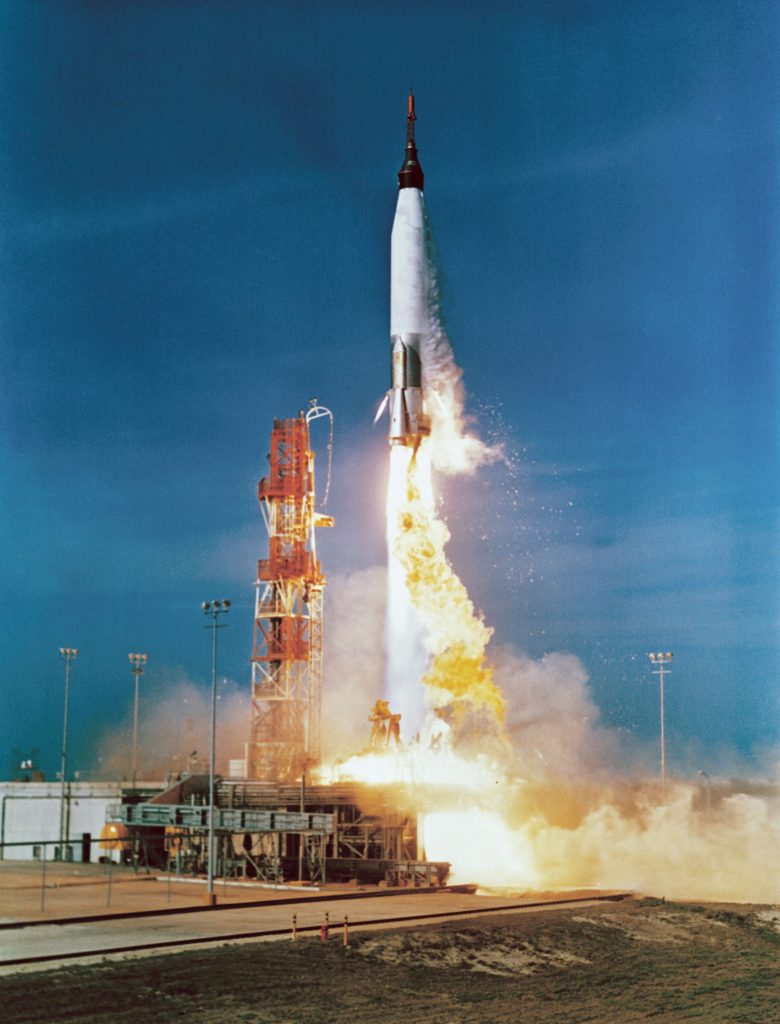
Another thing Jennings and his crew do is to look at the unused footage from a particular day. If you watch a news program on TV, a particular spot may only run for no more than a few minutes. These few minutes contain brief clips pieced together from longer videos, which producers editors scrub through looking for specific shots. That means that there is often hours of video footage that was shot but never used.
“For me, I want that tape. I want to see what else was shot that day. So even if the event is familiar, to the people who know the story or have seen a lot of docs, they’re seeing pieces of footage that no one has ever seen before, except for the couple of people who glanced at it that one day.”
“We always look for the raw footage whenever possible,” Jennings went on to say. “Not a lot of stations keep their raw, because it would just be unwieldy. But at the same time, something like the Mercury program was so popular that several of those stations did keep their raw footage, and we got access to it.”
Similar to tracking down raw material from a news station, Jennings also likes to track down the original photographers who covered the events. Photographers take dozens of shots trying to get that one shot that is just spectacular, and that’s the one that goes to print. But a lot of times, all of the other photos are just as amazing, but the general public hasn’t seen any of them.
“We’re constantly saying to ourselves in my company, ‘If I know that image, throw it out.’ Unless it’s the only one that exists. If I know that image, dump it. I don’t want to see it. I want to see something from the same place and time that’s never seen the light of day.”
As for deciding, with such an abundance of material, what stays and what goes?
“That’s the bane of my existence,” Tom Jennings said. “[…] Our first pass was probably three times longer than it needed to be. And that was with everything we liked. So we’ve got a six-hour cut that we’ve got to get down to two, and everybody likes what’s in here already. What are we gonna do?”
Then the whittling starts. What clips are redundant? Are there two clips that say the same thing, but one sums it up quicker or better? That usually manages to shorten it a bit, but further edits are needed. This is when “spirited discussions” occur in the edit bay, where they debate “whose favorites are gonna stay in and why”.
But from the start, the idea is to focus on particular moments. As Jennings described it, “the seven days that shook Mercury”. What are the big moments of the program that absolutely have to be covered?
“The way we do it is we apply a very old story-telling motif called ‘the hero’s journey‘, which was made famous by an American philosopher several decades ago named Joseph Campbell. […] We apply that to stories within our cut. That’s the only way we can make sense of it.”
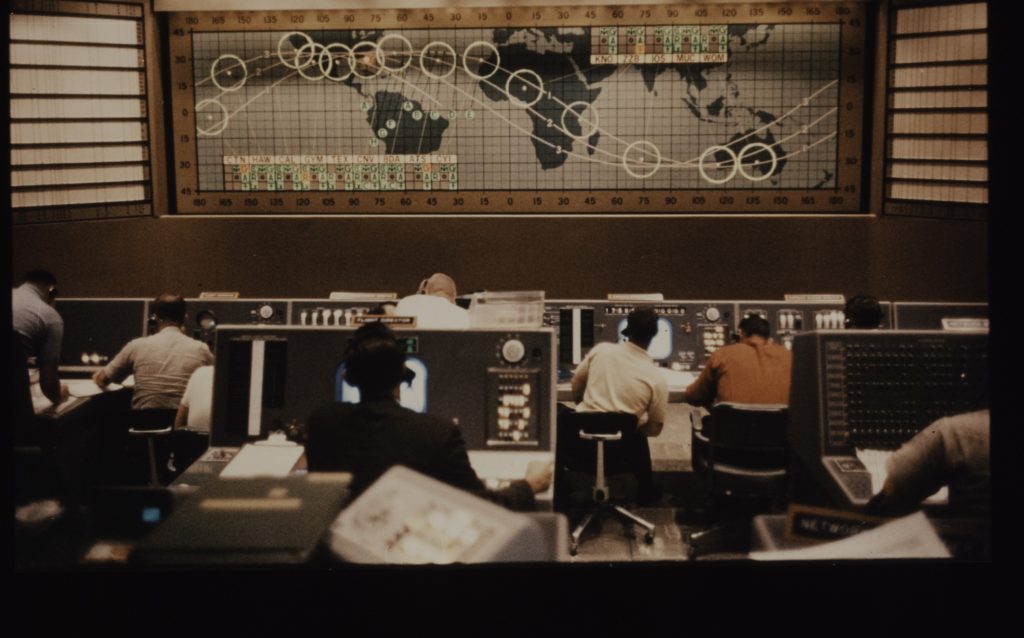
Rather than just focusing on, say, Alan Shepard and John Glenn, who were the more prominent astronauts, Jennings and his crew considered the astronauts as a group to be one “character”. How did they grow and change throughout the program? So, too, were the astronauts’ wives and families considered a character. The Real Right Stuff focuses quite a bit on Betty Grissom, Annie Glenn, and Rene Carpenter in particular. Likewise, NASA and its employees were a character, as was the American media and the American public.
“The biggest insult we could have, in making these, is that someone would say, ‘Well, that’s a nice clip show you put together.’ These are not built like clip shows. These are built like feature films, but everything in it is real.”
“It’s very tricky,” Jennings said. “It’s very tricky. But when it works, it’s like magic. And I guess we like making a little bit of magic with this stuff.”
As I’ve said, a lot of the footage in The Real Right Stuff is never-before-seen. There are home videos of the astronauts with their families; there are clips of them training and also them having fun on the beach. Some of the stuff featured in the documentary is stuff I was already familiar with that I remember learning about in books like Lost Moon and The Astronaut Wives Club. But some of what I saw was new to me, and I asked Tom Jennings what he considered the most interesting thing he learned over the course of putting together this film.
“Early on when [Tom Wolfe] talks about how the nation needed heroes at the time of the Mercury program, and just how big these heroes became. Even the astronauts themselves in some of the recordings in our film say, ‘Well, you know, we knew we’d be popular’ but no one had any clue that they would become like the Beatles before the Beatles hit America. The outpouring of how the nation needed heroes at the time was something that I either did not really get – the size of their popularity – or I had forgotten how popular they are. And this is before the age of social media, and people would turn out in the hundreds of thousands for these tickertape parades.”
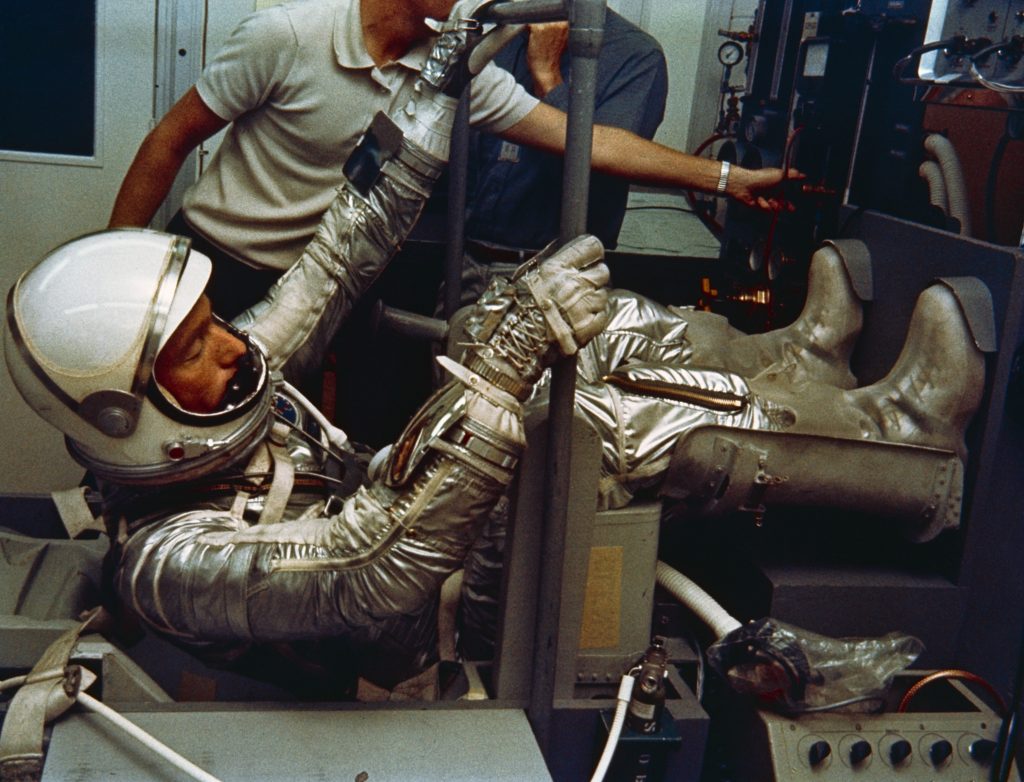
This is also emphasized in Rene Carpenter’s interview with Wolfe, parts of which can be heard in The Real Right Stuff. She had wanted to write about her husband’s flight for LIFE Magazine, which had the exclusive rights to the astronauts’ stories, but she felt she needed to be alone to do it. And she had to resort to subterfuge to escape her house with her kids and get to Cocoa Beach for the launch, as the press were camped out on her front lawn, much like we would expect of the paparazzi today.
“I guess in my own naivete about the time period – we like to think that they were more polite back then, you know what I mean?” Jennings said. “[…] But actually, the scene she described feels very contemporary to us. How she had to hide out at a certain house where she could watch her husband be launched into space with her children. And how she wanted to write her story herself.”
“There were a bunch of things along the way where it would be, like, I didn’t know that, I didn’t know that,” Jennings continued. “I didn’t know they trained in the desert for four days, you know, for survivalist training. I’d completely forgotten about the Grissom story where his hatch popped off. I had heard it once before, but it’s definitely not something that I would have conjured up right away. So we try and surprise people all throughout. I had never heard John Glenn’s debriefing tape about what was going on and those famous fireflies that he talked about outside the capsule window.”
Now, with The Real Right Stuff joining Apollo: Missions to the Moon, the most important question I had for Tom Jennings was, are we going to see a film about the Gemini project any time soon?
“I have pitched that. […] I have talked with National Geographic, and it’s not been greenlit, but the response has been, ‘Well, that would make sense, wouldn’t it?’.”
After all, he’s already got the material, and plenty of it, apparently. “And the images are even better! By then, they’d really gotten the color down. And there’s some really great moments in Project Gemini. […] It’s an obvious completion to a three-part series. Fingers crossed that it goes forward.”
I definitely have my fingers crossed for that!
I’d like to again thank Tom Jennings for taking the time to speak to me.
National Geographic’s The Real Right Stuff premieres November 20 on Disney+, along with the season finale of The Right Stuff.
Author: Jamie Sugah
Jamie has a BA in English with a focus in creative writing from The Ohio State University. She self-published her first novel, The Perils of Long Hair on a Windy Day, which is available through Amazon. She is currently an archivist and lives in New York City with her demon ninja vampire cat. She covers television, books, movies, anime, and conventions in the NYC area.
Help support independent journalism. Subscribe to our Patreon.
Copyright © The Geekiary
Do not copy our content in whole to other websites. If you are reading this anywhere besides TheGeekiary.com, it has been stolen.Read our


